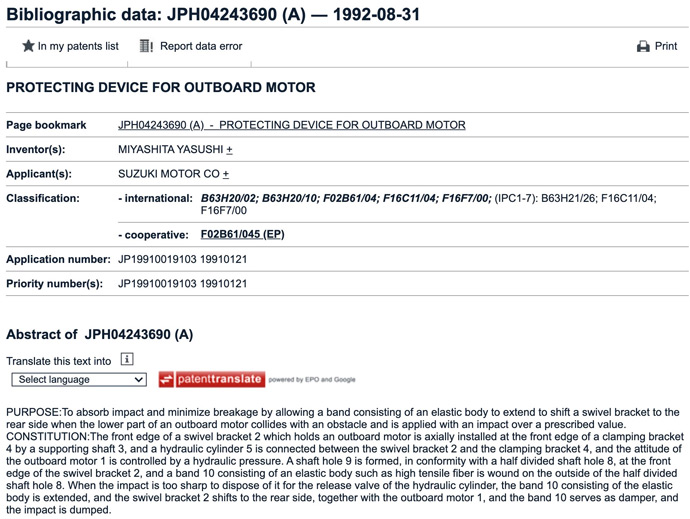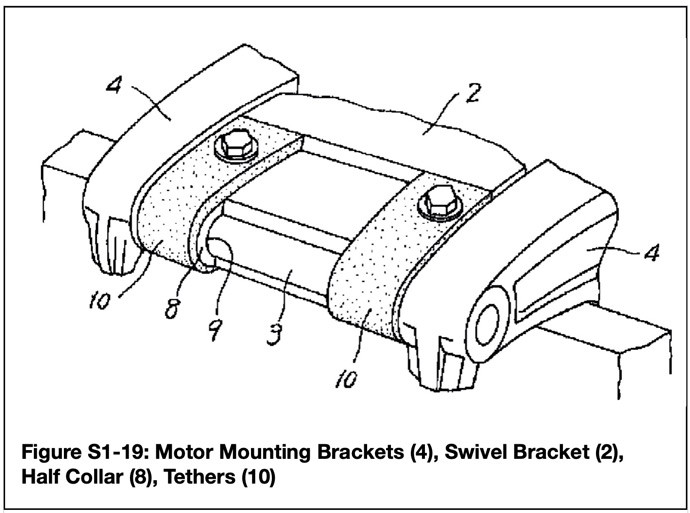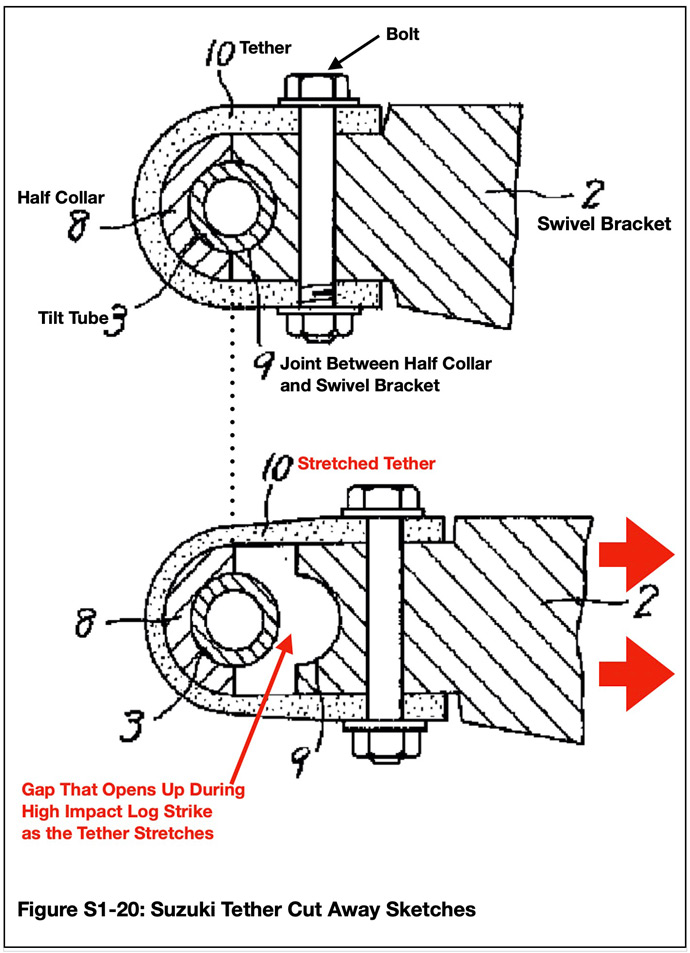Suzuki patents outboard tether in Japan in 1992
In January 2016 The Leash was released as a means of preventing bass boat outboard motors striking submerged objects from breaking off and flipping into boats. Previous to The Leash we saw examples of individuals and one state government agency creating their own tethers. We found the Coast Guard recommending home built tethers on bass boats back in 1972.
We previously wrote of two 1969 Brunswick / Mercury Marine tether patents.
More recently we found a 1992 Suzuki patent for an outboard motor tether, JPH04243690.
Suzuki defines the problem to be solved as, “If the speed at which the lower portion of the outboard motor collides with an obstacle is high, the release valve (tilt cylinder relief valves) cannot operate completely (cannot open fast enough), and the hydraulic cylinder and the outboard motor cannot be operated. The gear case at the bottom of 1 (the outboard motor) may be damaged, and a high repair cost may be required.”
Above is an English translation of the Patent bibliography available from the European Patent Office. We acquired the patent drawings from the Japanese patent office.
You can get a better idea of the approach reading the description above in combination with the image below.
Two elastic straps, #10, are bolted to the swivel bracket and wrap around the swivel bracket ears (loops through which the tilt tube passes).
As seen in the marked sketch below, during an extreme impact with a submerged object, the half collars around the front of the tilt tube remain in place, while the rest of the swivel bracket pulls away from the tilt tube as the two straps stretch.
Suzuki’s approach is a tether intended to prevent the outboard motor from breaking free. This patent had a sister patent issued at the same time for a variant of this approach (elastic bushings on the tilt tube in combination with some breakaway parts). We categorized the pair of patents as Cushioned Swivel Brackets. They cushion the swivel bracket from extreme log strike impacts.
By allowing the swivel bracket to extend while still attached to the tilt tube, the collision lasts longer which reduces peak forces and the resulting stresses.
Suzuki’s patents were both issued in August of 1992.


